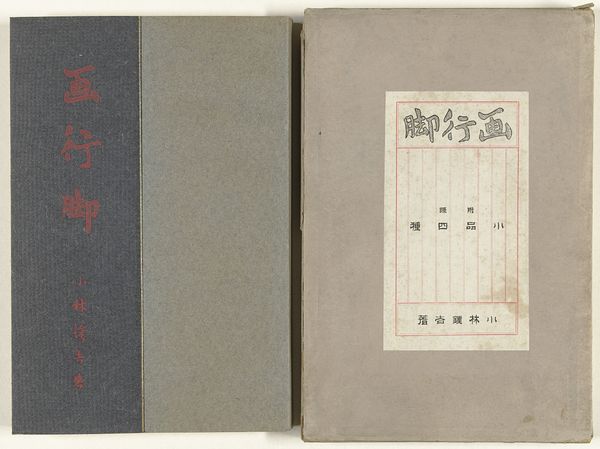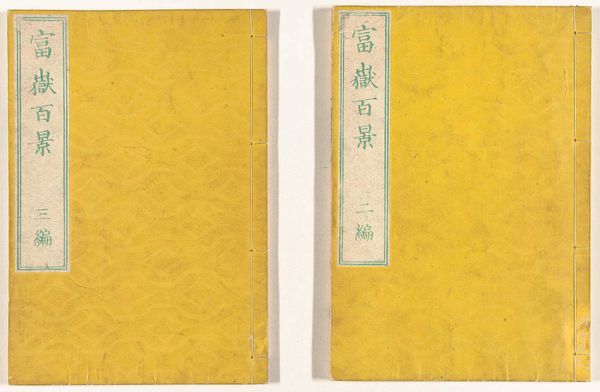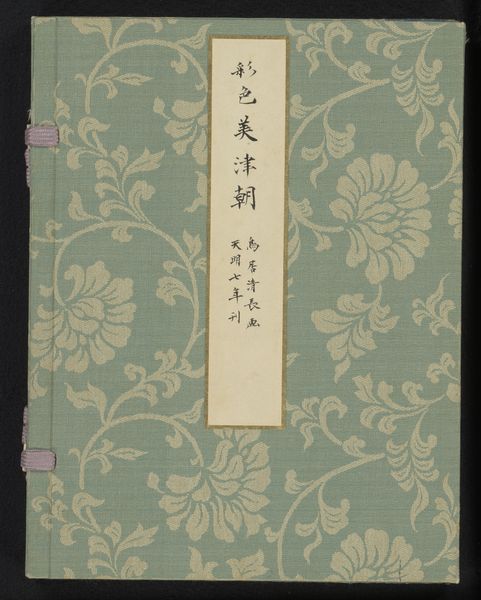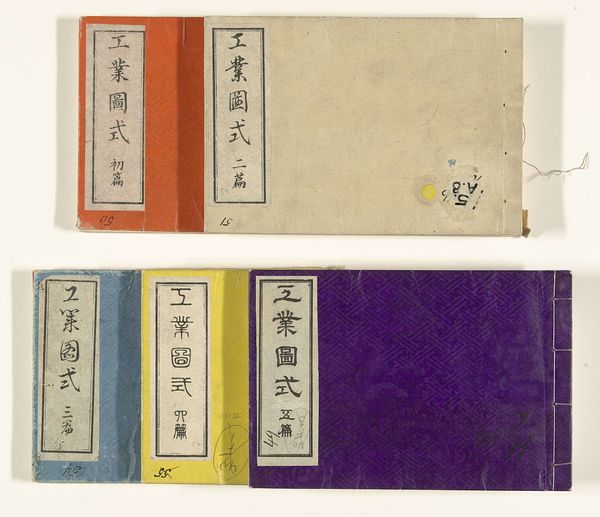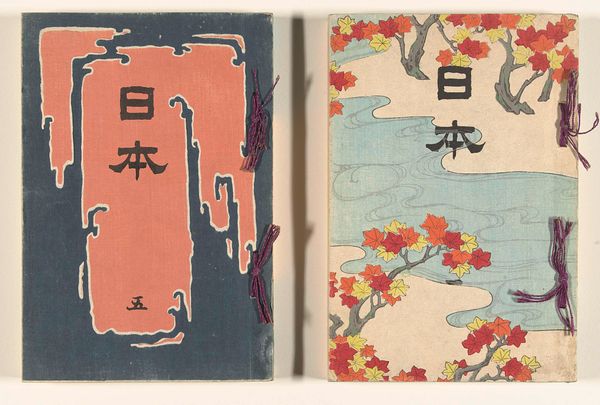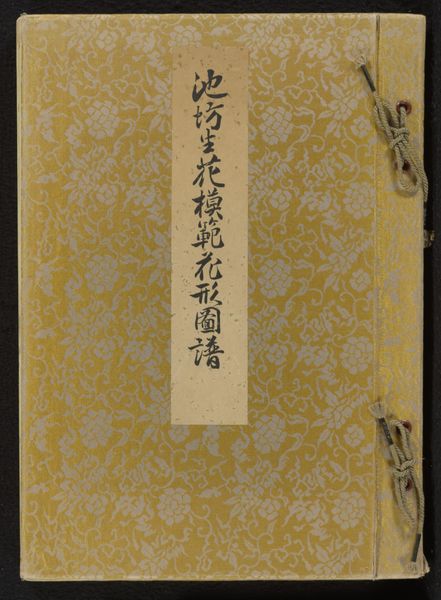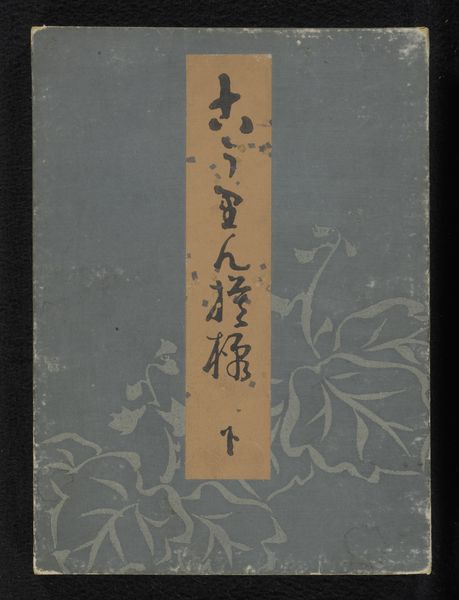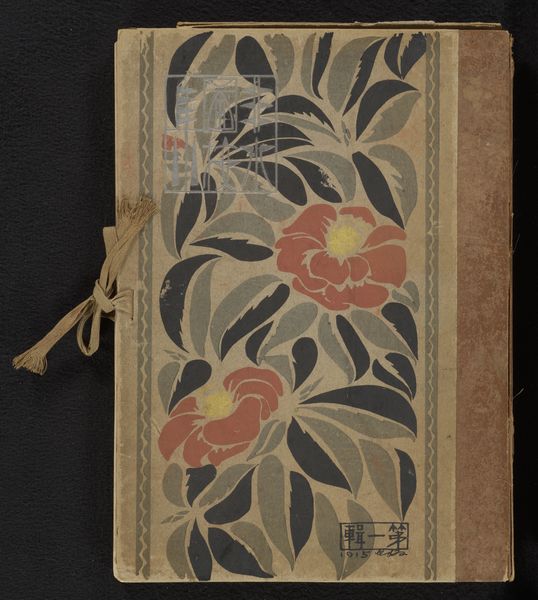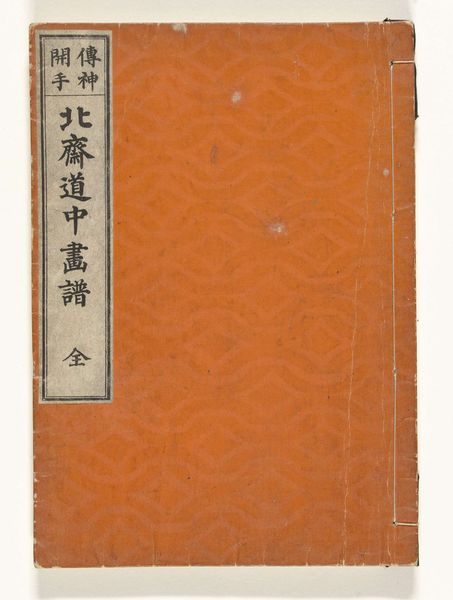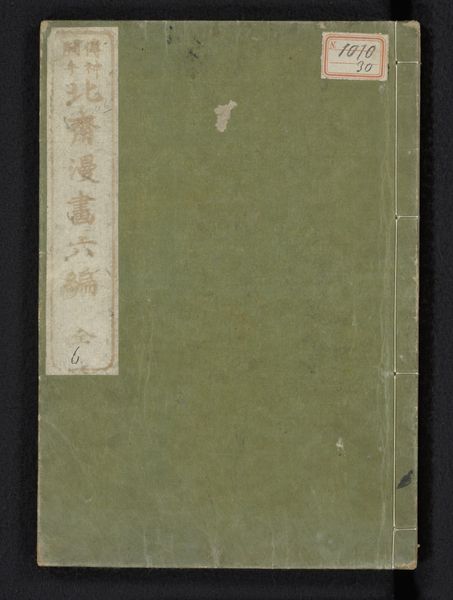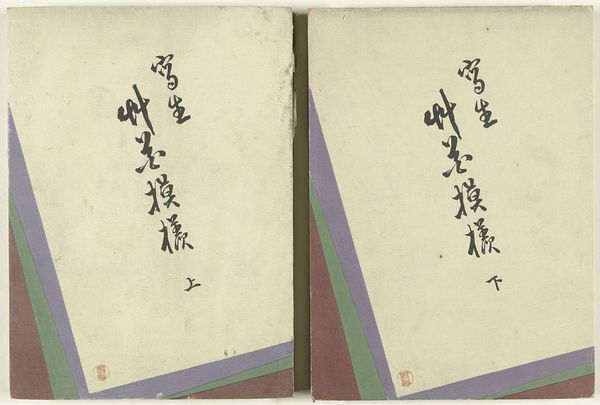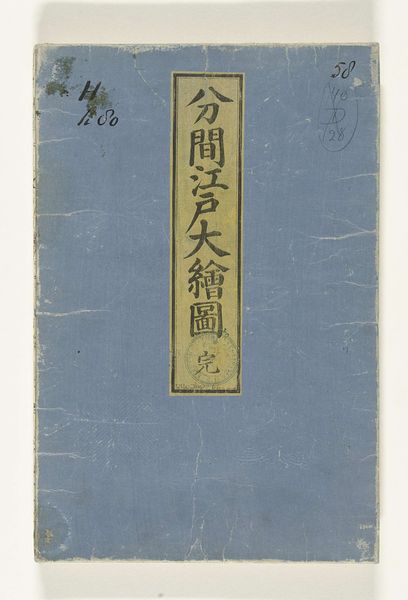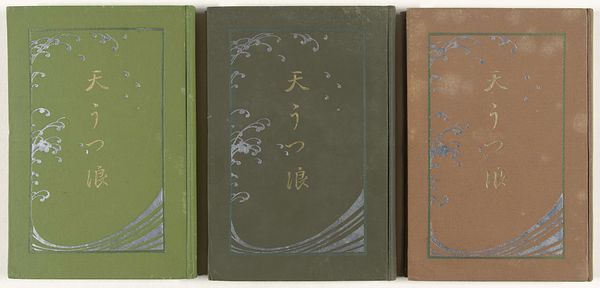
drawing, mixed-media, collage, screenprint, print, poster
#
drawing
#
mixed-media
#
organic
#
art-nouveau
#
collage
#
screenprint
# print
#
asian-art
#
coloured pencil
#
geometric
#
decorative-art
#
poster
Dimensions: height 224 mm, width 151 mm
Copyright: Rijks Museum: Open Domain
Curator: Ah, "Klaprozen," created around 1908. It's by Goyo Hashiguchi, and you can find it here at the Rijksmuseum. Editor: It has this muted yet energetic Art Nouveau vibe. Very tranquil, but then, bam, those poppy colors just pop. What strikes you most about it? Curator: The blend of media is really compelling. We’re looking at drawing, collage, and I think screen printing elements. A real commitment to blurring boundaries, using everyday printmaking techniques, such as poster design, to elevate "decorative art" beyond functional, reproductive ends. Editor: Absolutely, like a little rebellious streak dressed up in floral wallpaper. I like the dragonflies—they look almost stenciled—balancing that almost childlike flower imagery. Do you think the geometry hints towards the changing times for this artwork? Curator: Definitely, even in those repeated geometric patterns behind the flower stems, and of course, within the flowers themselves. But let's not forget the organic subject matter which ties it to its roots, if you will. This feels connected to labor history. I'd love to research more about the screen-printing and materials available for Asian art during this period to explore that further. Editor: It makes me want to know about Hashiguchi, this artist that was willing to juxtapose styles and mediums so freely. Like a breath of fresh air, almost an invitation to experiment. Curator: Precisely, this isn't just an image, it's the product of an aesthetic philosophy and social practices made manifest through artistic endeavor. A cultural expression of print-making combined with fine arts. Editor: Something about the layering, almost like it was built from scraps, really speaks to the possibilities of creation. Curator: Exactly! This isn't an idealized image of poppies. Instead, it’s presenting labor as beauty, the material transformed into art. Editor: That reframes the entire composition, doesn’t it? Gives it depth, makes it less…precious. I like that tension between what's represented and how it's constructed. Curator: And it's that exact dynamic that makes art like this continuously resonate. The social context isn't some added "bonus," it's literally built in. Editor: So true, something made of what matters! A nice closing reflection, thank you!
Comments
No comments
Be the first to comment and join the conversation on the ultimate creative platform.
